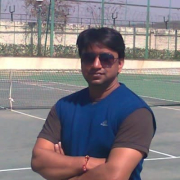

Oracle Service Bus and Red Hat Fuse are competitive products in the integration solutions category. Oracle Service Bus seems to have an advantage with its extensive integration features and scalability, while Red Hat Fuse stands out for its open-source flexibility and containerization capabilities.
Features: Oracle Service Bus offers robust routing, transformation, and extensive adapter availability, enhancing its integration with numerous systems and protocols. The monitoring and reporting features are highly valued for real-time insights. Red Hat Fuse, derived from Apache Camel, provides flexibility with a comprehensive set of connectors and strong containerization and cloud integration capabilities. It simplifies routing and integration, supporting various APIs and endpoint connectivity.
Room for Improvement: Oracle Service Bus could enhance cloud compatibility and integrate better security features, along with improving documentation for easier configuration. Its resource demands and complex licensing present challenges. Red Hat Fuse needs better documentation for installation and configuration, a more streamlined user interface, and improvements in its deployment process to minimize complexity.
Ease of Deployment and Customer Service: Oracle Service Bus supports a variety of deployment environments, including on-premises and hybrid cloud setups, with generally satisfactory technical support. Red Hat Fuse mirrors Oracle's support in diverse environments, offering open-source flexibility with satisfactory customer service, though both could enhance issue resolution speed.
Pricing and ROI: Oracle Service Bus is perceived as an expensive option due to complex licensing but offers long-term savings with its integration capabilities. Red Hat Fuse provides a cost-effective open-source alternative, attractive for enterprises emphasizing open-source benefits and is generally seen as offering a more favorable pricing model.
| Product | Market Share (%) |
|---|---|
| Oracle Service Bus | 10.6% |
| Red Hat Fuse | 7.0% |
| Other | 82.4% |


| Company Size | Count |
|---|---|
| Small Business | 8 |
| Midsize Enterprise | 6 |
| Large Enterprise | 22 |
| Company Size | Count |
|---|---|
| Small Business | 3 |
| Midsize Enterprise | 9 |
| Large Enterprise | 12 |
Oracle Service Bus transforms complex and brittle architectures into agile integration networks by connecting, virtualizing, and managing interactions between services and applications. Oracle Service Bus delivers low-cost, standards-based integration for mission critical SOA environments where extreme performance, scalability and reliability are critical requirements.
Oracle Service Bus enables companies to use the values of their enterprise applications portfolio. From on-premise, to the cloud to mobile devices, Service Bus allows companies to leverage their existing investments in new ways by extending the performance and scalability leadership of Oracle SOA and API Management.
Red Hat JBoss Fuse is a lightweight, flexible integration platform that enables rapid integration across the extended enterprise - on-premise or in the cloud. JBoss Fuse includes modular integration capabilities, an enterprise service bus (ESB), to unlock information.
We monitor all Enterprise Service Bus (ESB) reviews to prevent fraudulent reviews and keep review quality high. We do not post reviews by company employees or direct competitors. We validate each review for authenticity via cross-reference with LinkedIn, and personal follow-up with the reviewer when necessary.